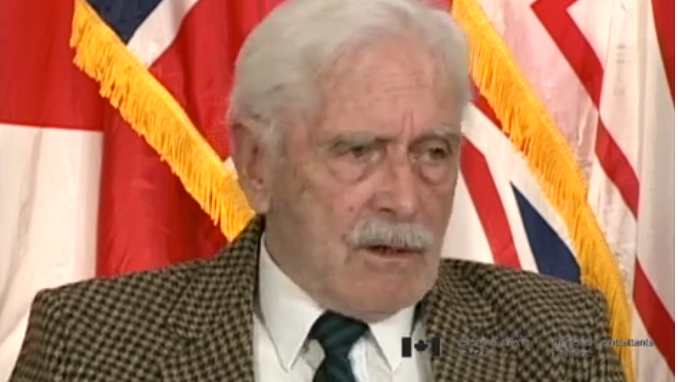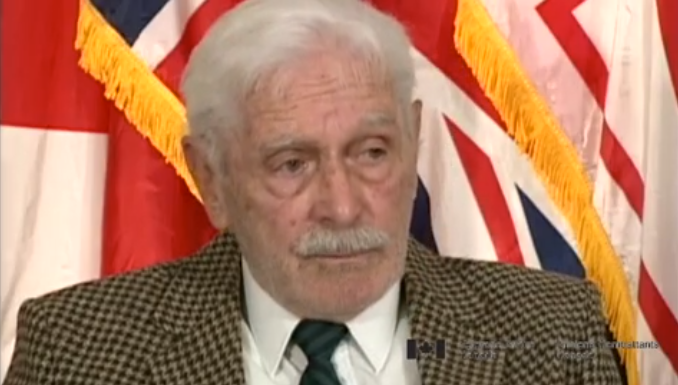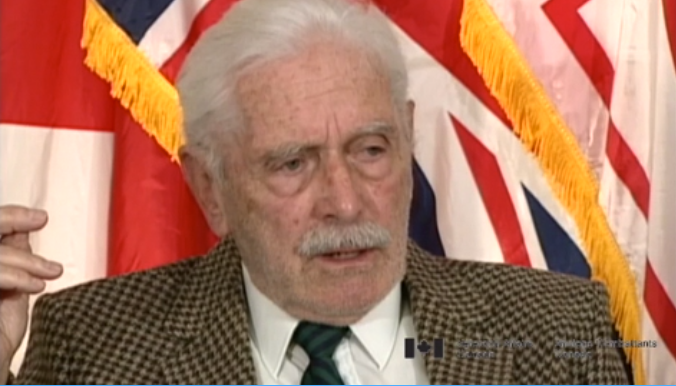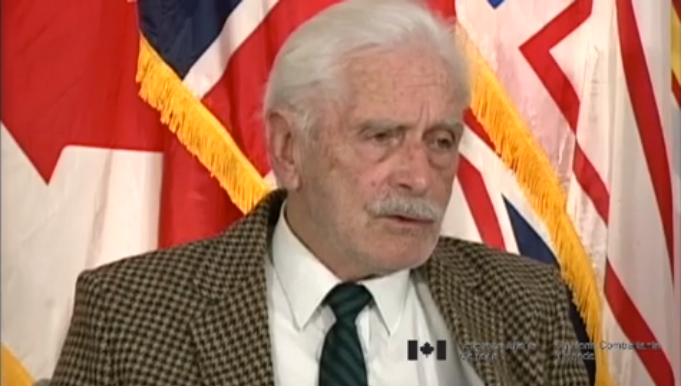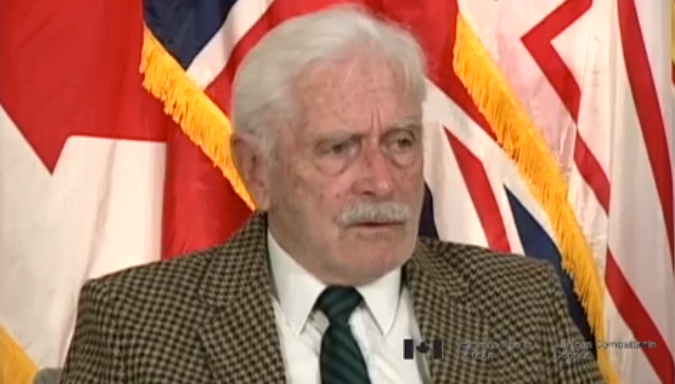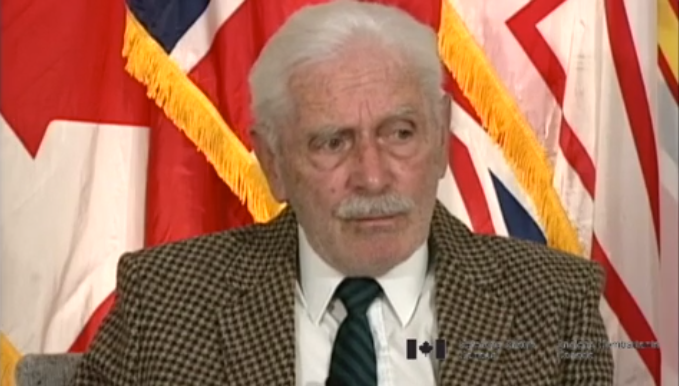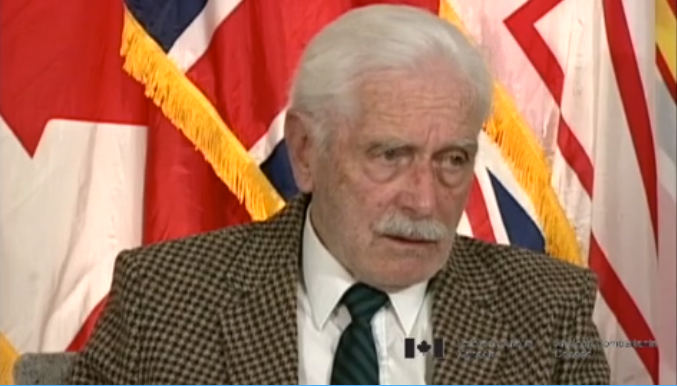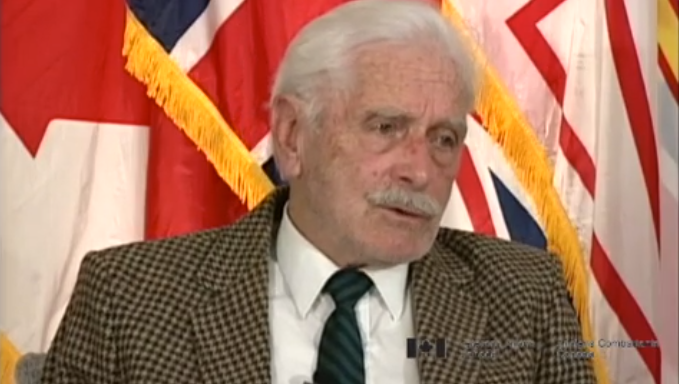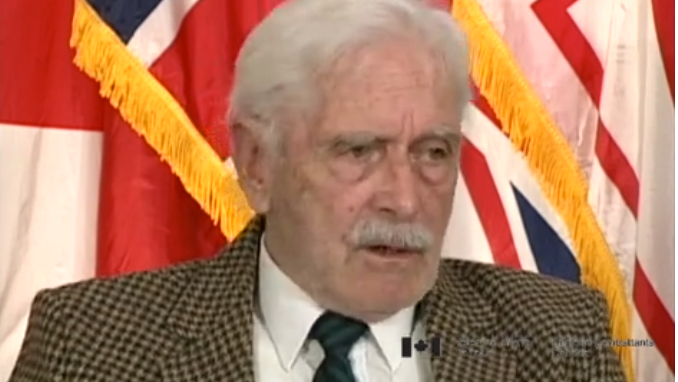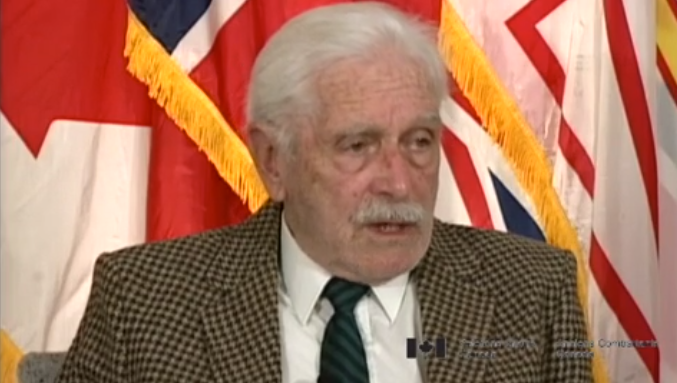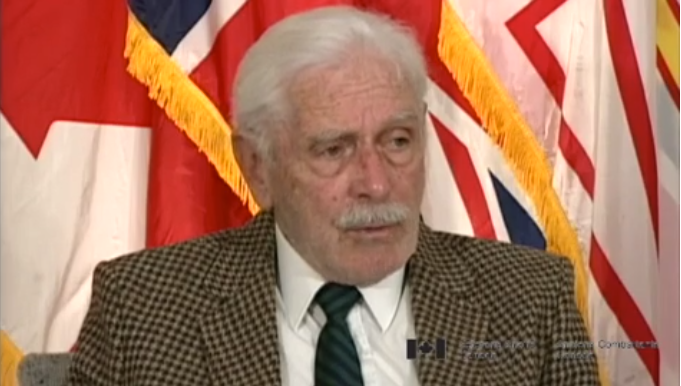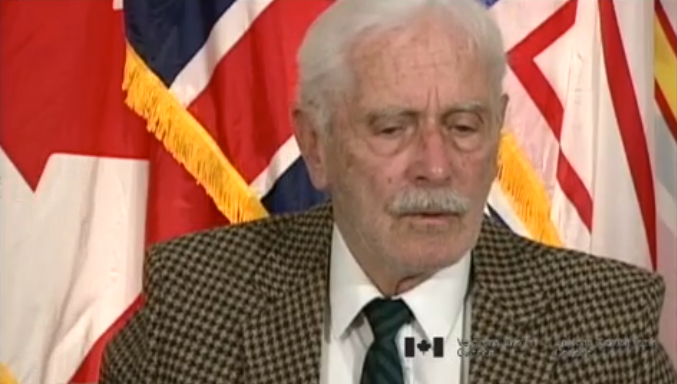Protective Measures
Heroes Remember
Protective Measures
Transcript
Description
Mr. Goodyear discusses several devices used to protect merchant ships: deck mounted guns, degaussing the hull, paravanes for mine sweeping, and finally balloons to deter Stuka dive bombers.
Thomas Goodyear
Thomas Goodyear was born in St. John’s, Newfoundland on March 17, 1920. He was the eldest of four children. His father had served in the First World war, and later became operating engineer in the local butter company. Mr. Goodyear left school at age 13 to learn the dry fish business, and in 1936 ran away to work at sea with provisioning coastal communities in Newfoundland, Labrador and Quebec. The outbreak of the Second World saw Mr. Goodyear join the transatlantic merchant fleet as a quartermaster. In addition to the North Atlantic, he saw service in the Indian Ocean, where he survived the torpedoing of his ship. Mr. Goodyear offers some unique experiences from his perspective as a Merchant Mariner.
Meta Data
- Medium:
- Video
- Owner:
- Veterans Affairs Canada
- Duration:
- 2:54
- Person Interviewed:
- Thomas Goodyear
- War, Conflict or Mission:
- Second World War
- Branch:
- Merchant Navy
Related Videos
- Date modified:



